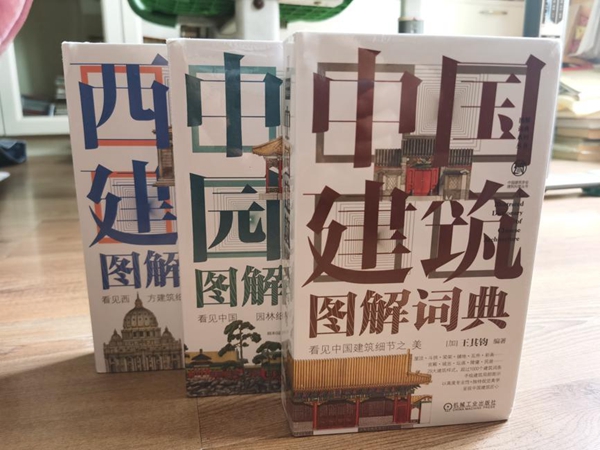

The three dictionaries act like a mysterious pair of glasses through which readers can not only understand ancient Chinese architecture and gardens, but also expand their international perspective, and have a glimpse of global architectural culture, critics say.
What is striking about the three dictionaries is that they have more than 3,000 hand-painted color illustrations which give a comprehensive picture of relevant buildings.
For example, the shape and details of the Forbidden City, Summer Palace, gardens in Jiangnan (a name that describes the areas south of the Yangtze River which is known for beautiful scenery), Eight Outer Temples and Basilica di San Marco in Venice can be clearly restored by the hand-painted color illustrations, and even their internal structures that the camera cannot shoot have been reproduced.
To the northeast of the Mountain Resort of Chengde in Hebei province, lies the Eight Outer Temples, the emperor's summer residence during the Qing Dynasty (1644-1911). Together with the Mountain Resort of Chengde, the temples were included on the UNESCO World Cultural Heritage list in 1994.
Opening the dictionaries, one can find the illustrations are like flowers. Children who like to draw can also use these illustrations as an ideal way to learn painting. With a doctor's degree in architecture at Tsinghua University, Wang began to draw the illustrations in the early 1990s. After decades of accumulation, the hand-painted illustrations have found their way into the three dictionaries.
Since the dictionaries were published by China Machine Press in 2006, they have been reprinted for more than 70 times and sold more than 100,000 copies, according to Southern People Weekly.
Since their republishing, the dictionaries have been popular with those who are interested in architecture, according to Wei Bing, an architect in Chengdu, Sichuan province.
"The three dictionaries will be placed at an easy-to-spot position on my bookcase. If they are not there, they must have been taken out for reading when I travel," he says.
Each of the dictionaries is only 13 centimeters wide, and is easy for adults to hold in one hand. The length of each dictionary is 22 cm, and a small handbag can hold it.
It is convenient to take one of the dictionaries to the subway or a bus and during travel, Wei says.
According to Zhao Rong, publisher of the three dictionaries, they have been published in Chinese and Korean. They will also be published in Vietnamese, Japanese and Russian.
Born in Xuzhou, Jiangsu province, in 1954, Wang is hailed as one of the 60 most influential Chinese painters after the founding of the People's Republic of China in 1949 in a 60-volume Chinese art documentary, Classics and Immortality, sponsored by the Publicity Department of the Communist Party of China Central Committee in 2010.